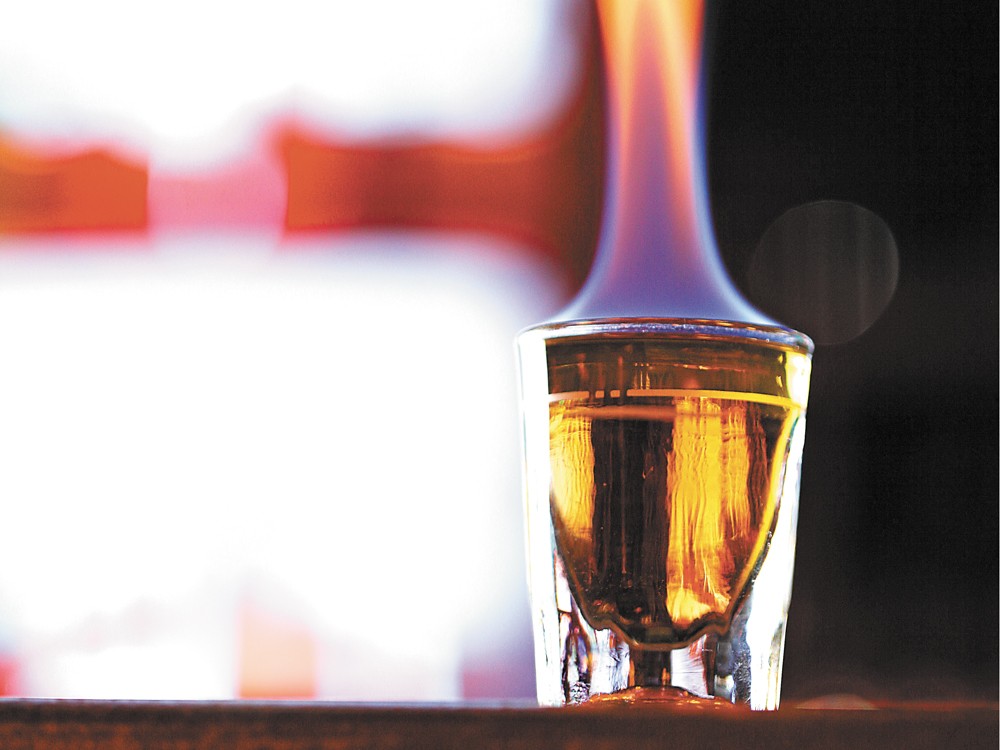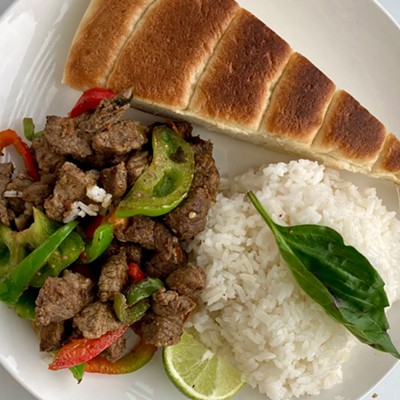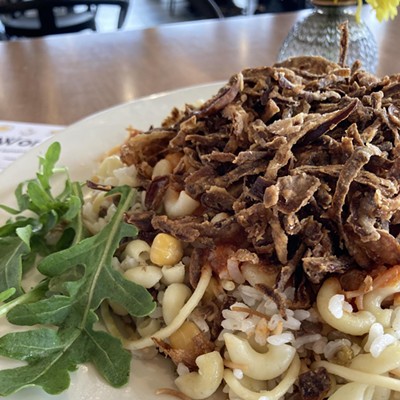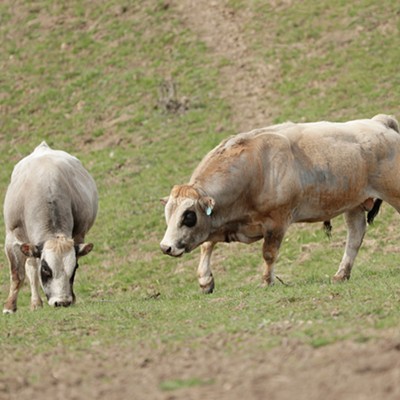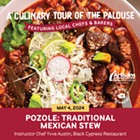Across Spokane, fewer shot glasses of the stuff are being dropped into glasses of Red Bull and tossed in a single gulp down the gullets of hot-blooded twentysomethings.
When the Jagerettes drive over from Seattle, as they still do from time to time, they find a city with less of an appetite for the product they sell, even if the market for undulating female hips continues unabated.
Once a dominant liqueur in the area — and still dominant in much of the drinking world — local sales of Jagermeister are off 30 percent from last year, according to Young’s Market, a liquor distributor.
Bartenders, owners and distributors say the slowing of the river of Jager is not caused by temperance, nor by cost.
The culprit, they say, is Fireball.
Like curling, Molson Ice and Trailer Park Boys, it swept in from the north.
The year was 2006, the best anyone can remember. Back then, Matt Goodwin owned The Blvd. and Bryan Harkey tended bar there. Between fielding orders for Jager Bombs, Pabst tall boys, vodka cranberrys and straight shots of tequila, the men began fielding questions about something called Fireball.
Soon, the requests multiplied. “When a bunch of people start asking for something you’ve never heard of before … as an owner, you figure out what it is,” says Goodwin.
What he figured out: Fireball is a “Cinnamon whisky” from Canada. It can’t be called a “Canadian whisky,” though; that term carries trade restrictions. On the old state liquor store shelves, may they rest in peace, it sat in the liqueur section.
Sazerac, the New Orleans company that imports Fireball from Canada, categorizes the drink as a “shooter,” which isn’t a classification of booze but a method for drinking it.
Still, that’s probably the best way to describe it. When Goodwin and Harkey got their hands on Fireball, they found the best thing to do with it was the most direct thing: Put it in a shot glass by itself and then tip it back.
“As a bartender, that was the allure,” Harkey says. “You can make a shot that everybody likes without pouring anything else into the glass.”
For someone doing high-volume, smash-and-grab booze work, Harkey says, a straight shot is priceless. It made sense for owners, too. “Anytime you get a customer to buy an extra shot a night” on top of what they’re already drinking, Goodwin says, “it helps the bottom line.”
The bartenders began to push the stuff, and patrons took it from there.
A cheap Fireball shot is now the go-to promotion at bars all over town. Even Bistango, the martini bar that showcases top-shelf liquors and elaborate cocktails, offered a $3 Fireball special this year for Hoopfest.
“Hoopfest is the one day that I turn into a sports bar,” owner Reema Shaver says. “We wear cargo shorts and smelly guys come in here and it’s so much fun. What better way to encourage that than to have a Fireball [promotion]?”
Shaver also stocks Jagermeister, but the tide has turned. “Hands down, Jager has taken the back shelf to Fireball. My [liquor] rep is going to get mad at me, but it is what it is. Military guys used to do Jager, now they do Fireball and Patron.”
That seems to be true everywhere.
Harkey now works for Young’s Market. The distributor tracks sales of liquor down to the shot, he says. While Jager is down 30 percent from a year ago, Fireball has jumped 110 percent in that same period.
“Next to well vodka, Fireball is the best-selling liquor right now,” Harkey says. “Nothing else is even close.”
If you had to choose — and be honest — between a shot of something that tastes like black licorice cough syrup and looks like ox blood or something golden red that tastes like liquid Red Hots, which would you pick?
Even Fireball’s detractors say they understand its popularity. Shawn Heale, the bar manager at Beignets, is disdainful of Jager and Fireball in equal measure, but he says it makes sense why one has overtaken the other.
“[Fireball] took the same marketing strategy that Jager did in the ’80s and ’90s,” Heale says, “and put it behind a product that is much easier to drink for the everyday palate.”
Matt Goodwin now co-owns three bars, the Marquee Lounge, Press and Fast Eddie’s. Marquee — a bar that caters to people in their 20s — sells more Fireball than anyone in town, according to Harkey. Press and Fast Eddie’s sell a lot of the stuff, too, though. Goodwin believes that’s because it fills a point of convergence in the market — a place young men, young women, and even older drinkers like to be.
“I know a lot of girls that like Fireball who don’t like Goldschlager and don’t like whisky,” he says. “I know older gentlemen who like it because it’s a whisky-based shot as opposed to a quote, unquote, ‘girly shot.’”
Even at its height, “[Jager] was really always Bull Blasters,” Harkey says, referring to Spokane’s nickname for Jager dropped in Red Bull. No one wanted to just do a shot of the stuff.
And while Jager is still a massive liquor brand (11th largest in the world this year) and Fireball isn’t even on the national radar yet, what happened in Spokane may be a booze bellwether.
“Ten years ago, I feel like Spokane made Bull Blasters,” Harkey says, “I’d go to other cities and I’d ask for a Jager Bomb and no one knew what it was.” Now they’re everywhere, he says.
The same is becoming true of Fireball. “We were in Vegas two years ago and you couldn’t find a Fireball shot anywhere in town,” Goodwin says. “Now it’s all over the place.”
Harkey laughs at himself for saying it, but says it anyway: “For better or worse, Spokane might be the Fireball capital of the world.”

